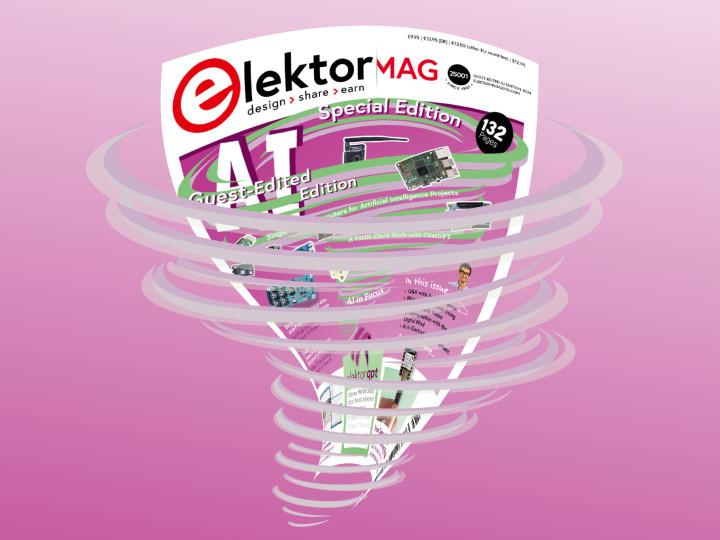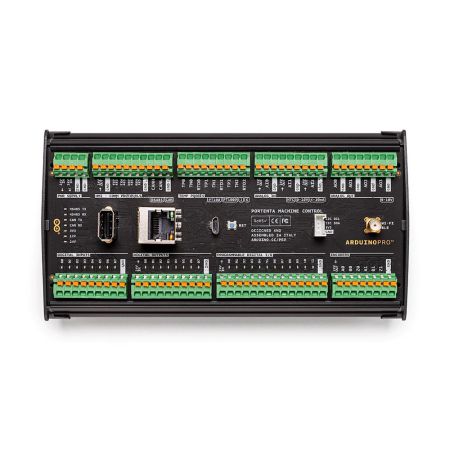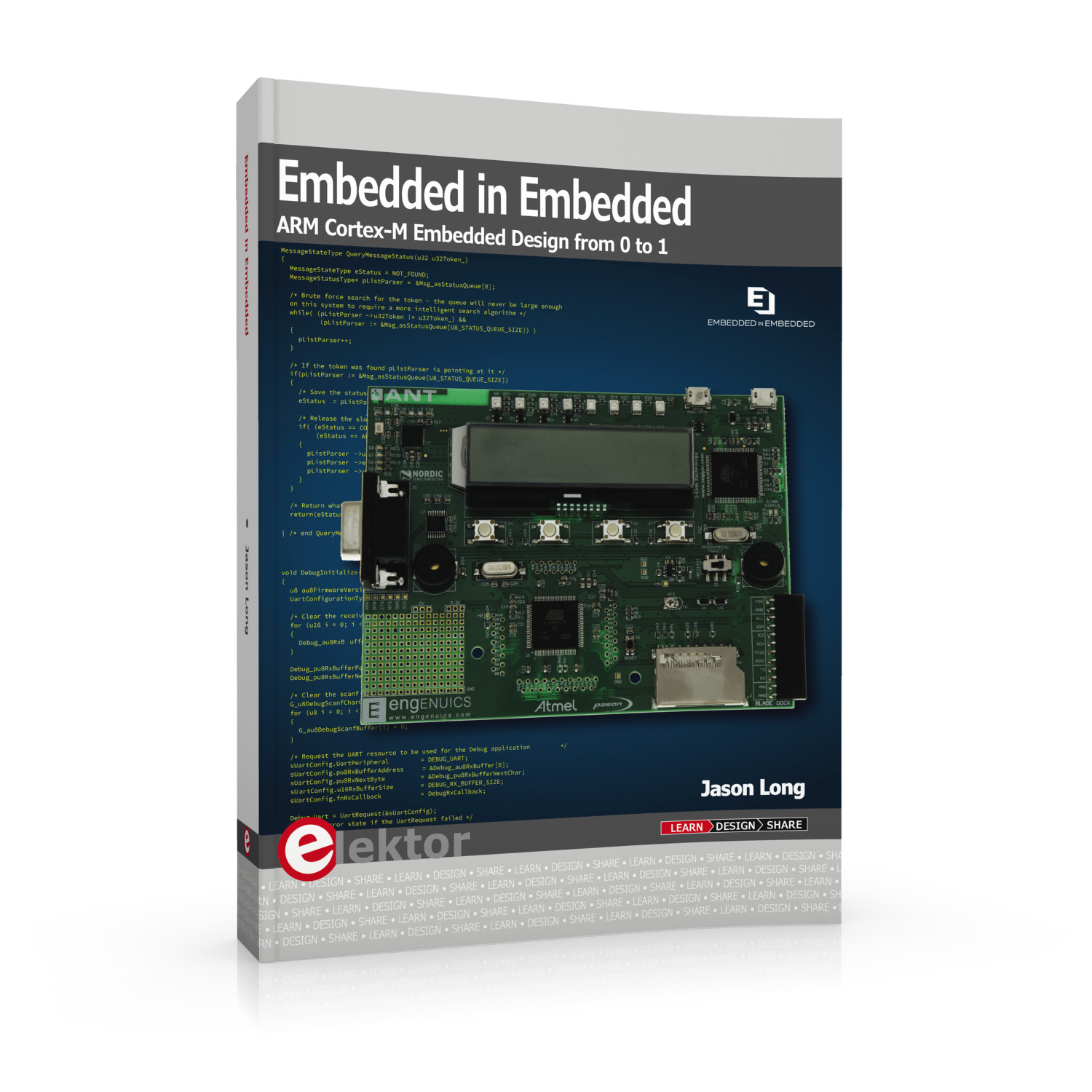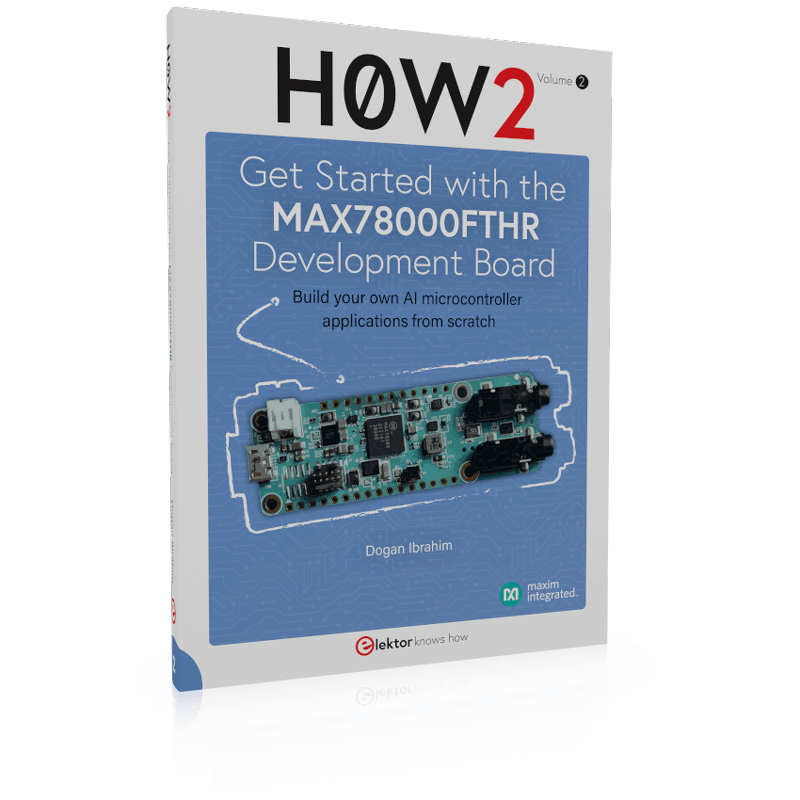Embedded & AI
Welcome to the exciting intersection of embedded systems and artificial intelligence (AI). Here at Elektor, our engineers and editors are on a tireless quest to bring you must-have embedded systems- and AI-related content. Dive into our archive of DIY project articles, immersive engineering tutorials, captivating interviews, and helpful videos, all meticulously curated and continuously updated to keep you at the forefront of embedded and AI advancements. We cover the fascinating realm of embedded development, where microcontrollers and MCU-based projects come alive. We decode the secrets of embedded programming, and we unlock the potential of machine learning and AI in everyday applications. We dive deep into the realms of embedded vision and embedded security, where innovation meets practicality, safeguarding our digital future. This page isn't just a resource; it's your gateway to immersing yourself in the vibrant world of embedded systems and AI.
ElektorMag March/April 2025: Embedded & AI
Embedded systems and AI-driven technologies are at the heart of modern engineering and electronics, driving innovation in home automation, industrial IoT, robotics, consumer devices, and beyond. In the March/April 2025 issue of ElektorMag, we deep-dive into RISC-V solutions and tackle projects such as AI-powered face detection, a DIY FPGA-based audio player, an ECG graph monitor, and a MIDI synthesizer. Plus, the edition includes 16 pages of in-depth industry insights from our colleagues at eeNews Europe. Check out the magazine!
Bonus Content
Download the free Embedded & AI bonus edition from Elektor! Inside, we cover a virtual assistant with ChatGPT and Raspberry Pi, connected autonomous vehicles, the Intel 8279 keyboard/display interface, Makerfabs SenseLoRa, and more. The edition will be available for download on or around March 6, 2025!
Latest News
17-12-2025 | The age of treating embedded security as a "nice to have" is officially over; every network-connected...
16-12-2025 | As embedded and IoT systems grow more connected and critical, their security risks extend well beyond...
15-12-2025 | Modern Vision Language Models can now run on low-cost edge hardware like the RUBIK Pi 3. With its...
11-12-2025 | Are you interested in edge AI? Want to read more Edge Impulse-related projects and tutorials? Visit...
8-12-2025 | Historically, creating an ML model and deploying it to an embedded device required considerable manual...
5-12-2025 | Unlock smarter workouts with a programmable fitness timer that guides your reps, rest periods, and routines...
3-12-2025 | Elektor welcomes Edge Impulse as its 2025 guest editor for an in-depth edition dedicated to the...
1-12-2025 | The Arduino UNO R4 brought a modern 32-bit platform to the classic UNO form factor, adding higher voltage...
1-12-2025 | Join us live on December 11 for an exclusive Elektor webinar with Daniel Situnayake from Edge...
1-12-2025 | Ready to add AI to your ESP32 Energy Meter? In this project, you’ll learn how to use Home Assistant data...
27-11-2025 | The judging panel of the STM32 Edge AI Contest selected three exceptional projects that demonstrated...
24-11-2025 | Power a lamp or heat a mug — no wires needed. This project transfers 20 W through a 5...
ElektorMag: Guest-Edited AI Edition 2024
Visual Debugging for Embedded Systems
Embedded Systems
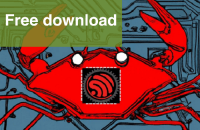
Rust + Embedded
Known for its emphasis on memory and thread safety, Rust has become a favored choice for creating dependable and secure software. However, the question arises: Is Rust an intelligent choice for embedded applications? As we delve into this topic, you'll discover that Rust provides numerous benefits over conventional languages used in embedded development, like C and C++, including enhanced memory safety, better support for concurrency, and superior performance.Download free article

What’s Next for AI and Embedded Systems?
AI is frequently portrayed as a one-size-fits-all solution, equipped to tackle any challenge. In contrast, some view it as a precursor of the apocalypse. As engineers and makers, we understand that both extremes are far from reality. So, how can we more effectively implement AI in our projects? Moreover, do breakthroughs in AI actually threaten to make us obsolete?Download free article

Unleashing the ESP32-P4
Step into the future of microcontrollers, where security that won't break the bank, groundbreaking performance, and unmatched connectivity meet. This advanced-performance microcontroller is set to transform the landscape of embedded systems, unlocking a world of opportunities for developers, engineers, and the entire Internet of Things (IoT) ecosystem.Download article

The Metronom Real-Time Operating System
For numerous tasks, such as processing continuous signals, microcontrollers must execute operations at precise time intervals. The real-time operating system (RTOS) introduced here is well suited for AVR controllers that have limited memory. It requires accepting certain constraints, such as programming exclusively in assembler, but this remains an acceptable trade-off for projects where speed and real-time performance are crucial.Download article
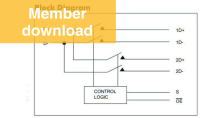
The New I3C Protocol
A Worthy Successor to I²C, or Just More Hot Air?
Few bus protocols have achieved the widespread adoption seen by the I²C bus protocol, introduced in the 1990s by Philips Semiconductor. Nevertheless, over recent years, the limitations of this bus system have become evident. A potential successor, the I3C protocol, is poised to take its place, and this article aims to provide a comprehensive overview of it.
Download article

Infographics: Embedded and AI
Artificial intelligence (AI) revolutionizes engineering, automating tasks and enhancing designs. The global embedded software market thrives with AI integration, notably in communications. Advancing AI technology demands trust and careful consideration of its benefits and challenges.Download free article

Arduino-Based LED Cube: Build an Arduino-Based 3D Light Show
A 3D light show that will astound you with its combinations. Inexpensive and easy to make thanks to an Arduino controller, and with no need for printed circuit boards. Ideal for beginners and enthusiasts, the project promises both simplicity and creativity.
AI
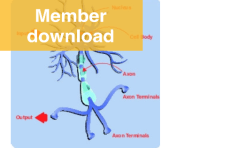
Understanding the Neurons in Neural Networks
Artificial Neurons
While artificial intelligence (AI) and machine learning (ML) have been democratized thanks to cloud-based tools such as TensorFlow, these huge powerful platforms can seem intangible if you are trying to understand how ML works “under the hood.” In this series, we go back to basics and explore most of these systems’ basic building block, the neural network. Along the way, there are plenty of examples to try, examples of cool and obscure ML projects, and at the end, we’ll even bestow an Arduino with a brain
Download article
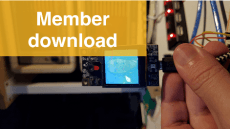
The Thinking Eye
Facial Recognition and More Using the ESP32-S3-EYE
The Espressif ESP32-S3-EYE board is specifically crafted for exploring image recognition and various AI-related projects. It is supported by a handy software ecosystem and offers various examples, both for the ESP-WHO framework for facial recognition and for manual operation with TensorFlow. The author explains: The experiments conducted here demonstrate that the ESP32-S3 platform is capable of executing object and facial recognition payloads in various ways.
Download article

CaptureCount
An Object Detector and Counter on the Raspberry Pi 5
Elektor engineer Saad Imtiaz dives into the fascinating topic of machine vision. The CaptureCount project began with a clear goal to create an all-round object detection and counting system that recognizes object types and then counts the object of each category it detects. The design features a Raspberry Pi 5 and a Raspberry Pi Camera Module 3. Saad covers hardware integration, object detection models, Python coding, and more.
Download article
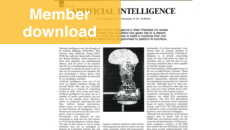
Artificial Intelligence
As you know, artificial intelligence (AI) is one of the hottest topics of our time. But did you know Elektor authors, engineers, and editors have been pondering thinking about AI for decades? Check out this classic Elektor article from 1988 that covers a bit of AI history and speculates on the future of the field. Author M. Seymour writes: "Neural computers may help in solving problems that still defeat conventional computers in spite of the enormous increase in processing power made possible by VLSI technology. These problems include pattern processing tasks, such as speech recognition, and the creation of content addressable memories.Download article
Microcontrollers

Microcontroller Documentation Explained (Part 1)
Datasheet Structure
Documentation is a necessary aspect of working with microcontrollers, whether you like it or not. Given the complexity of microcontrollers compared to simpler semiconductor devices, the documentation tends to be extensive. Let’s explore microcontroller documentation, what is covered in the datasheet, what is not, and how to find any additional information you may need.
Download article
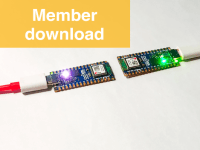
ESP32 and ChatGPT: On the way to a Self-Programming System

Vision System for Small Microcontrollers
This innovative vision system stems from the innovative method it employs to capture video images. This method is fully compatible with the limited processing capabilities of the microcontroller used, as well as the slow sampling rate provided by its built-in analog/digital converter. The circuit opens the door to experimentation and even practical applications. For instance, the author experimented with the object presence detecting software while looking for a way of detecting the presence of letters and packets in a letter-box, rather than the event of their being put into the box.Download article
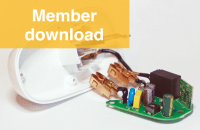
Smart Plug Teardown: Which Ones Are Hacker-Friendly?
Low-cost Wi-Fi-enabled sockets or smart plugs enable remote control of lamps and various consumer appliances, with some models even capable of recording power consumption. In this article we ask a few questions: What hardware is utilized in these devices? Can I replace the firmware? The project features an Espressif ESP8266 microcontroller.Download article
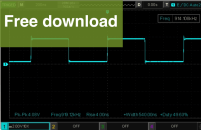
Square Wave Generation Benchmarks: Exploring ESP32, Pico, and Other Microcontrollers
Function generators, though versatile, struggle with square waves at higher frequencies. Microcontrollers offer an alternative, as observed with ESP32-S2 producing crisper waves. Core speed versus pin-switching speed elucidates MCU limitations. Development environments impact frequency generation, with native environments proving superior. Experiments unveil MCU wave integrity, with frequencies affecting waveform crispness. Future research may employ DDS chips for high-frequency generation.Download free article
Embedded Development

Practical ESP32 Multitasking: Task programming with FreeRTOS and the Arduino IDE
When using a microcontroller in a design project, you can face the problem that more than one task needs to be performed at a time. Examples include scanning sensor values or controlling actuators. You can solve this problem with task programming based on lightweight embedded operating systems. FreeRTOS is an open-source solution for a variety of microcontroller platforms. The article focuses on developing an application that reads the ADC from a potentiometer and displays it on an OLED in bar graph form. In addition, the author illuminates an LED using pulse-width modulation (PWM), varying it from dim to bright.Download article
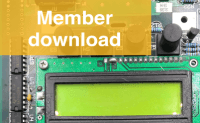
Microprocessors for Embedded Systems
Embedded engineers and hobbyists now have an abundance of options when it comes to computing power, owing to the wide selection of microcontrollers available. However, this hasn't always been the case, so let's explore the history of embedded systems. David Ashton writes: "Intel started the ball rolling in 1974 with the venerable 8080, which could be said to herald the true start of the microprocessor age. It needed two support chips, the 8224 clock generator, and the 8228 bus controller. Unusual for today’s engineers, it also needed both ±5 V and +12 V supplies. Later iterations, such as the 8085, only needed a +5 V power supply." Read on to learn more.Download article

A Black-Box Approach to Embedded Systems Vulnerability Assessment
Are you serious about embedded security? If so, you must test your designs and products for issues and vulnerabilities. This article covers a way to assess an embedded system’s security profle using black-box network-based techniques. Open-source tools and Python scripts based on the Sulley Fuzzing Framework are described. You will learn how the health status of the device under test can be monitored remotely over a network connection.Download article

Android as a Development Platform: Using Low-Cost Tablet PCs in Embedded Applications
You can learn a lot about embedded development from Elektor's vast archive of articles. For instance, in 2011, we published an article about using off-the-shelf tablet PCs as embedded devices. What sort of applications are possible? The author describes a few: a data logger with configuration settings entered over the GUI; telemetry from a car, with live data displayed on the GUI and 3G link capability for reading out data in real time and storing it on a flash memory card; a digital oscilloscope with settings and waveform display on the GUI; and more.Download article
Related Products
Arduino Pro Portenta Machine Control
The Portenta Machine Control is a fully-centralized, low-power, industrial control unit able to drive equipment and machinery. It can be programmed using the Arduino framework or other embedded development platforms.
Embedded in Embedded
This book is a case study in embedded design including discussion of the hardware, processor initialization, low‑level driver development, and application interface design for a product.
Get Started with the MAX78000FTHR Development Board
The main usage of this board is in artificial intelligence applications (AI) which generally require large amounts of processing power and memory. It marries an Arm Cortex-M4 processor with a floating-point unit (FPU), convolutional neural network (CNN) accelerator, and RISC-V core into a single device.
Google AIY Vision Kit for Raspberry Pi
Google AIY Projects brings do-it-yourself artificial intelligence to your maker projects. The Google AIY Vision Kit lets you build an image recognition device that can see and identify objects, powered by TensorFlow’s machine learning models.
Login
No account yet? Register for free!
Forgot password?
Please enter your email address. Instructions for resetting the password will be emailed to you now.
Register
Already have an Elektor ID account? Click here to log in.
Thank you for your vote!
Leave further comments in the fields below.
Thank you for your vote!
If you wish to leave a comment with your rating, please first use the login below. If not, just close this window.
No account yet? Register for free!














